Comics & Classic Space: An Interview with Thomas Labourot
/Best of BrickNerd - Article originally published November 10, 2022.
Comics are a great source of inspiration for builders. And while this is exactly how I started my previous article on The Unicorn from Tintin, it holds so very true for today’s feature on Thomas Labourot aka Legolabo, a French comic book artist and classic space builder I had the chance to chat with.
Being a big fan of comics I just had to know how Thomas merges these two passions—I hope you’ll enjoy our conversation as much as I did!
Sam: Hello Thomas, I’m honoured to be talking to you. To start off, would you mind introducing yourself?
Thomas : Hi Sam, I am a 45-year-old boy who likes to draw and play, to tell stories, and to create worlds to escape to.
Sam: You are a comic book writer by profession. What are some of the titles you worked on, and were any of them published in the US?
Thomas: I'm currently working on a new series whose first volume has just been released in July: A-LAN at Dupuis with BEKA helming the script. This year I also released Animal Farm, an adaptation of George Orwell's novel at Jungle with Maxe l'Hermenier writing the script, and at the beginning of October, I released an adaptation of Charles Dickens' Christmas Carol! I also finished my series Aliénor Mandragore at rue de sèvres with Séverine Gauthier taking care of the script.
An American first volume of Aliénor is available, the others are too recent.
Sam: You work out of Workshop 510 together with other renowned comic authors. Can you tell us a bit about that special work environment?
Thomas: It's a workshop of more than 130 square meters where dust fights without mercy in the middle of a lot of toys, books and pots of paint! And in the middle of all that there are seven people who live there from morning to evening, who work there and create comic strips. There is a scriptwriter, some French-Belgian cartoonists, comic book artists, and colorists, and all of them try to cohabit in this geek's den!
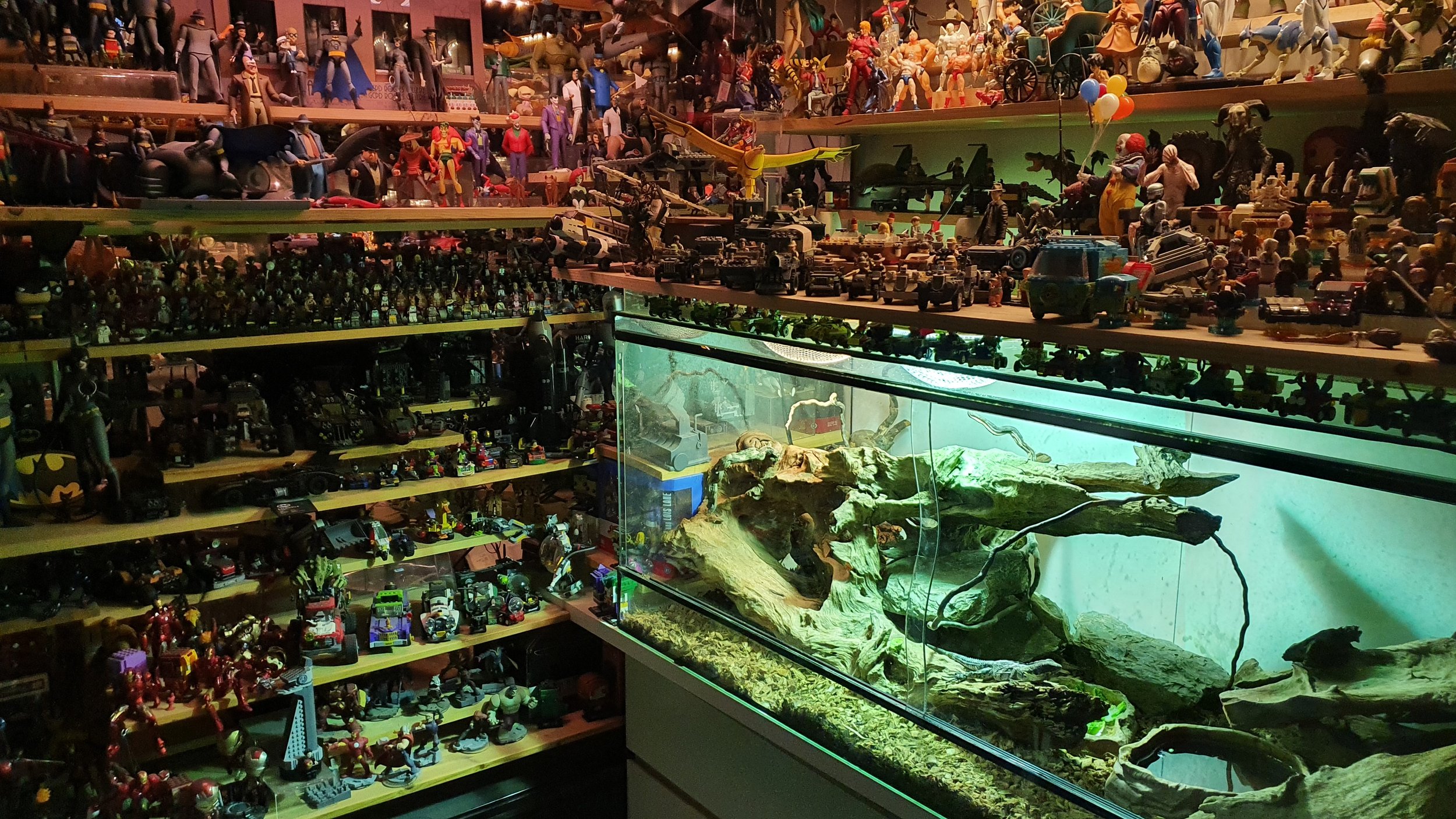
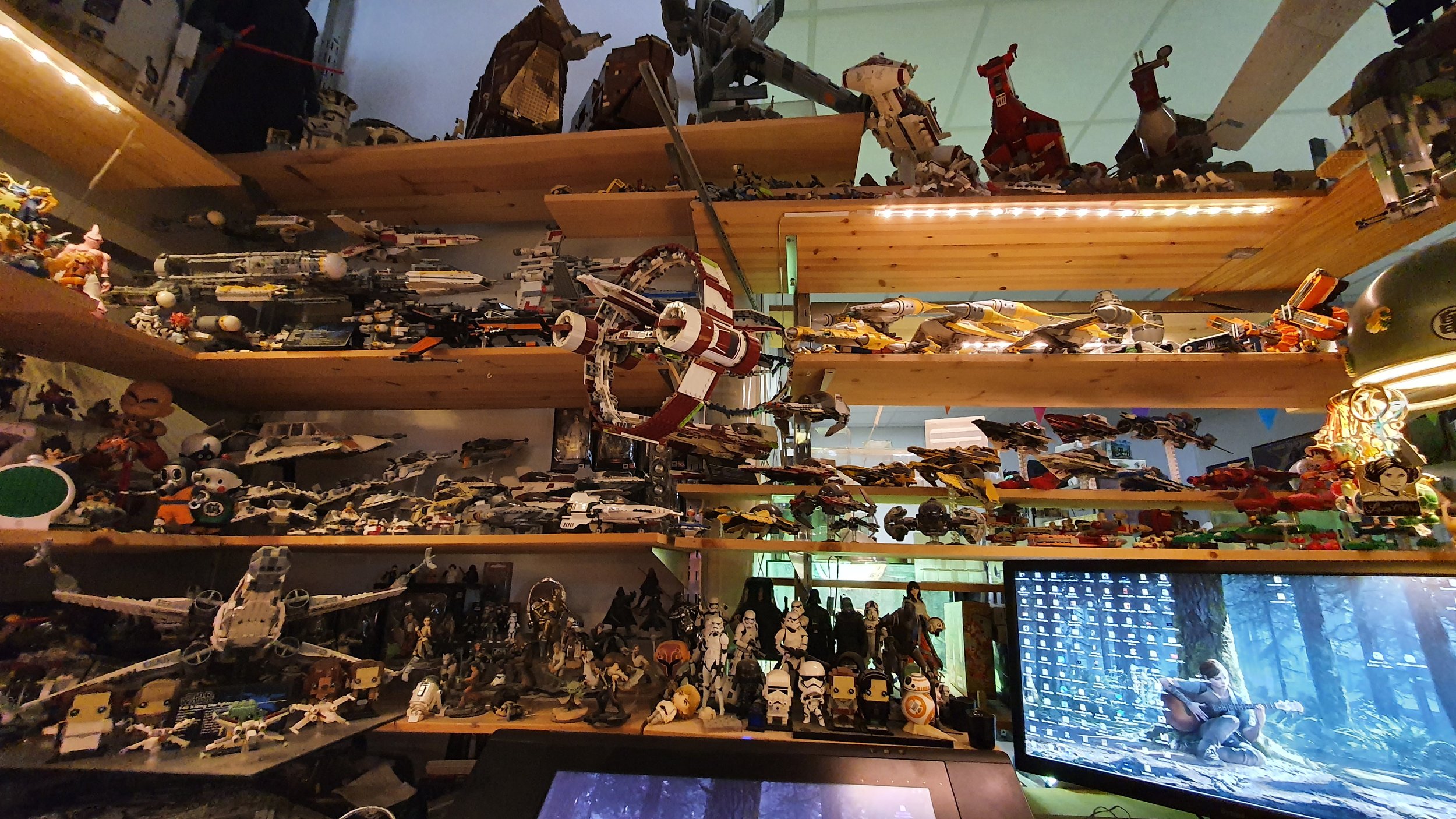
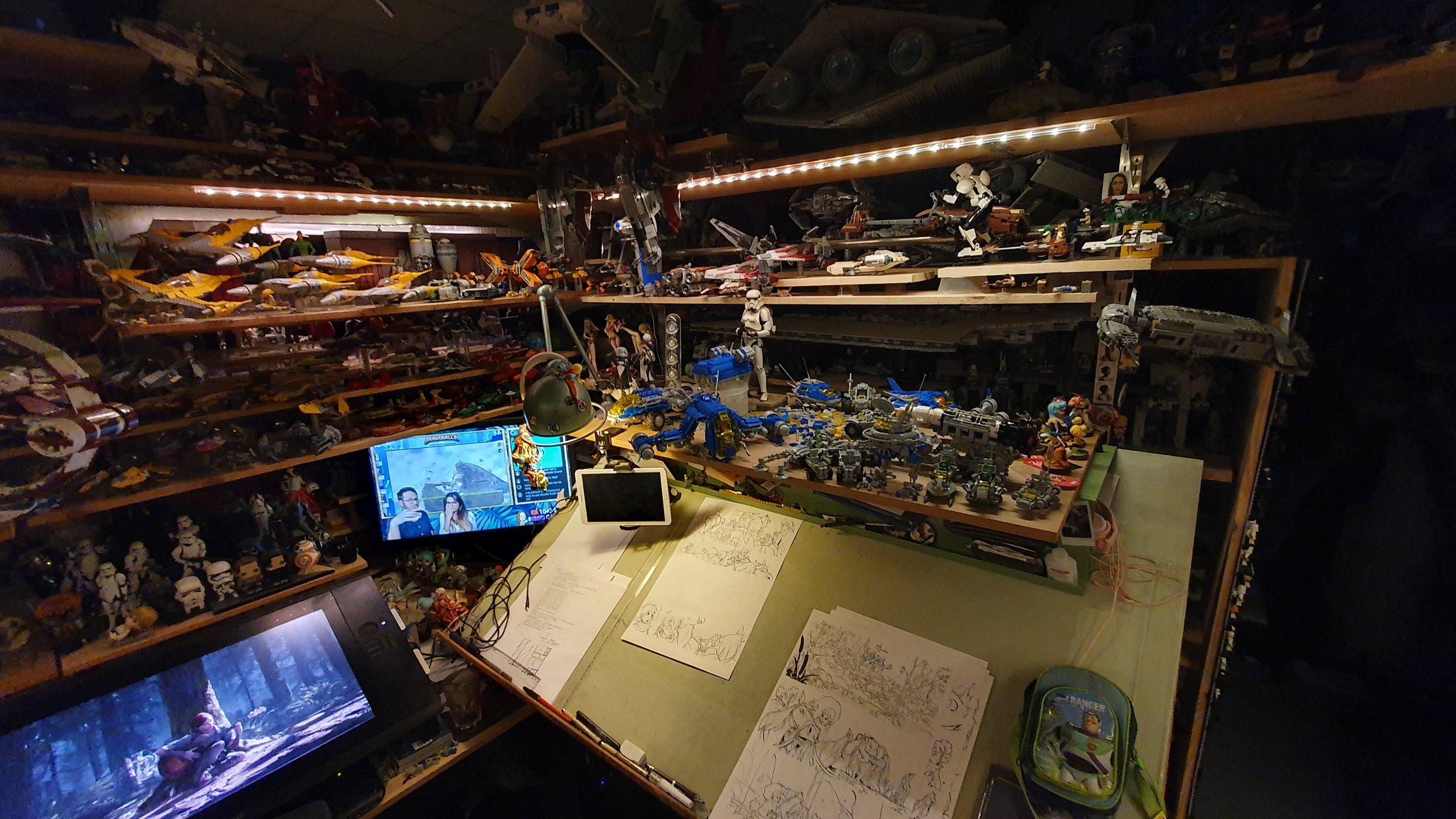
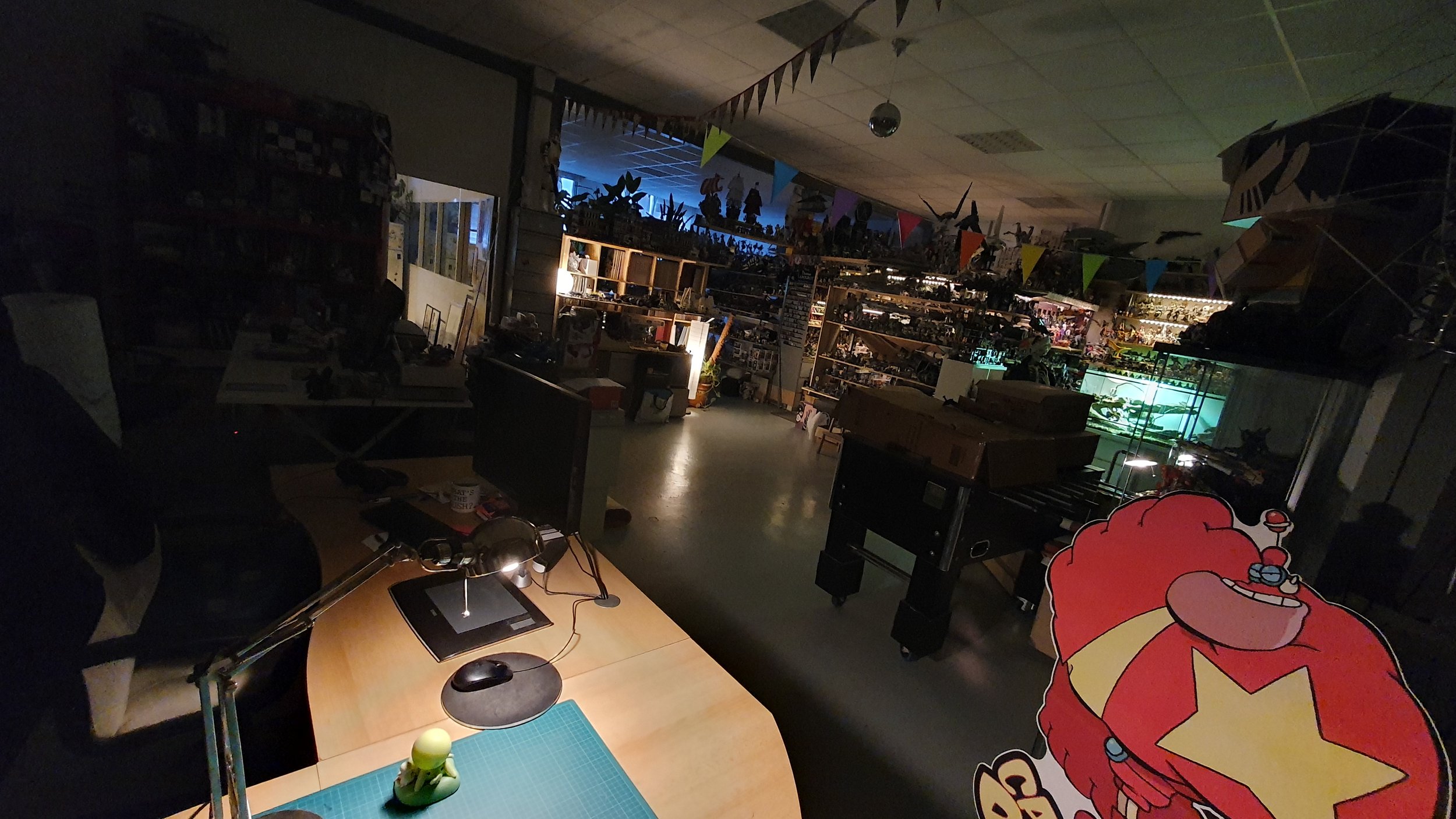
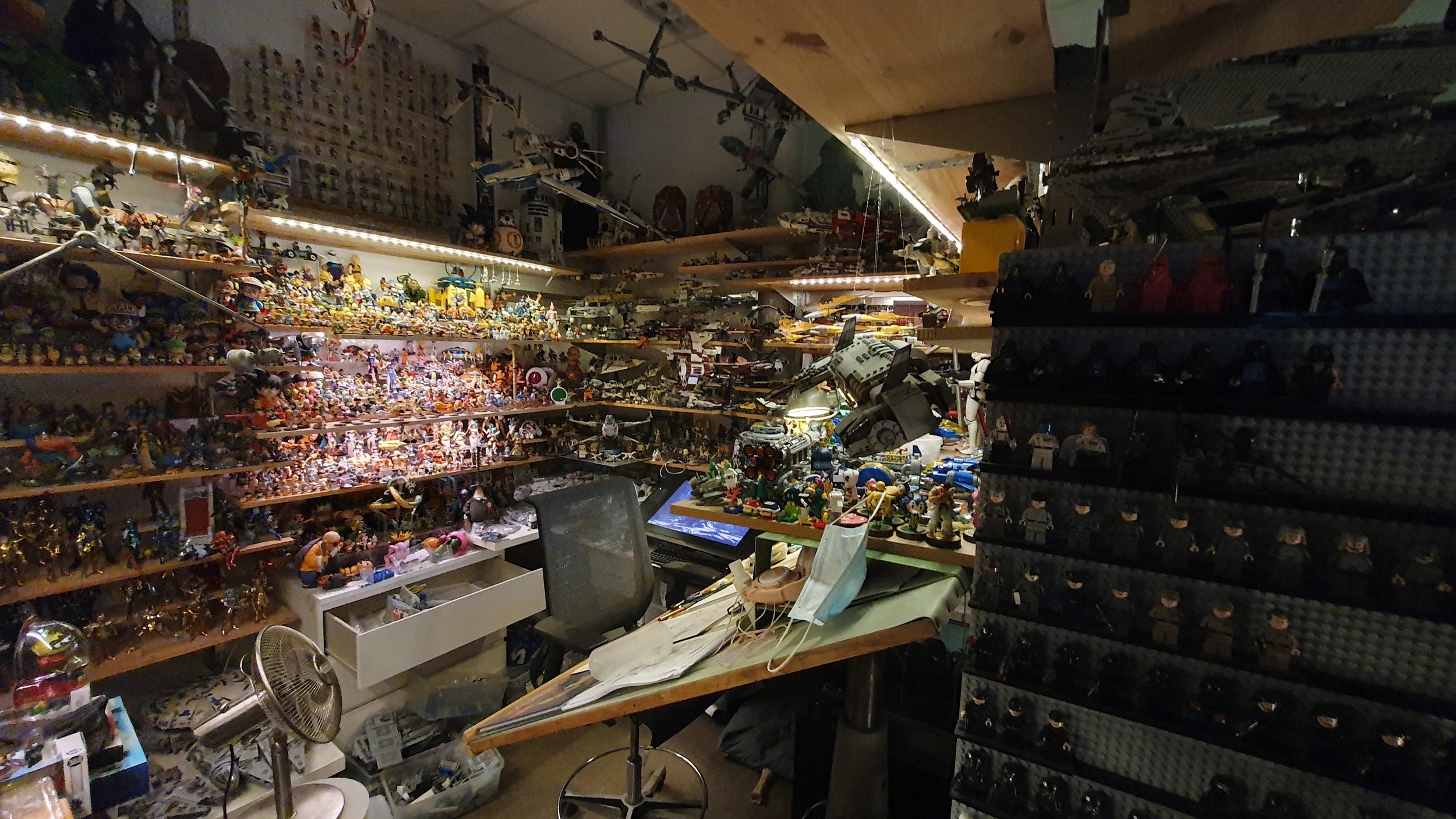
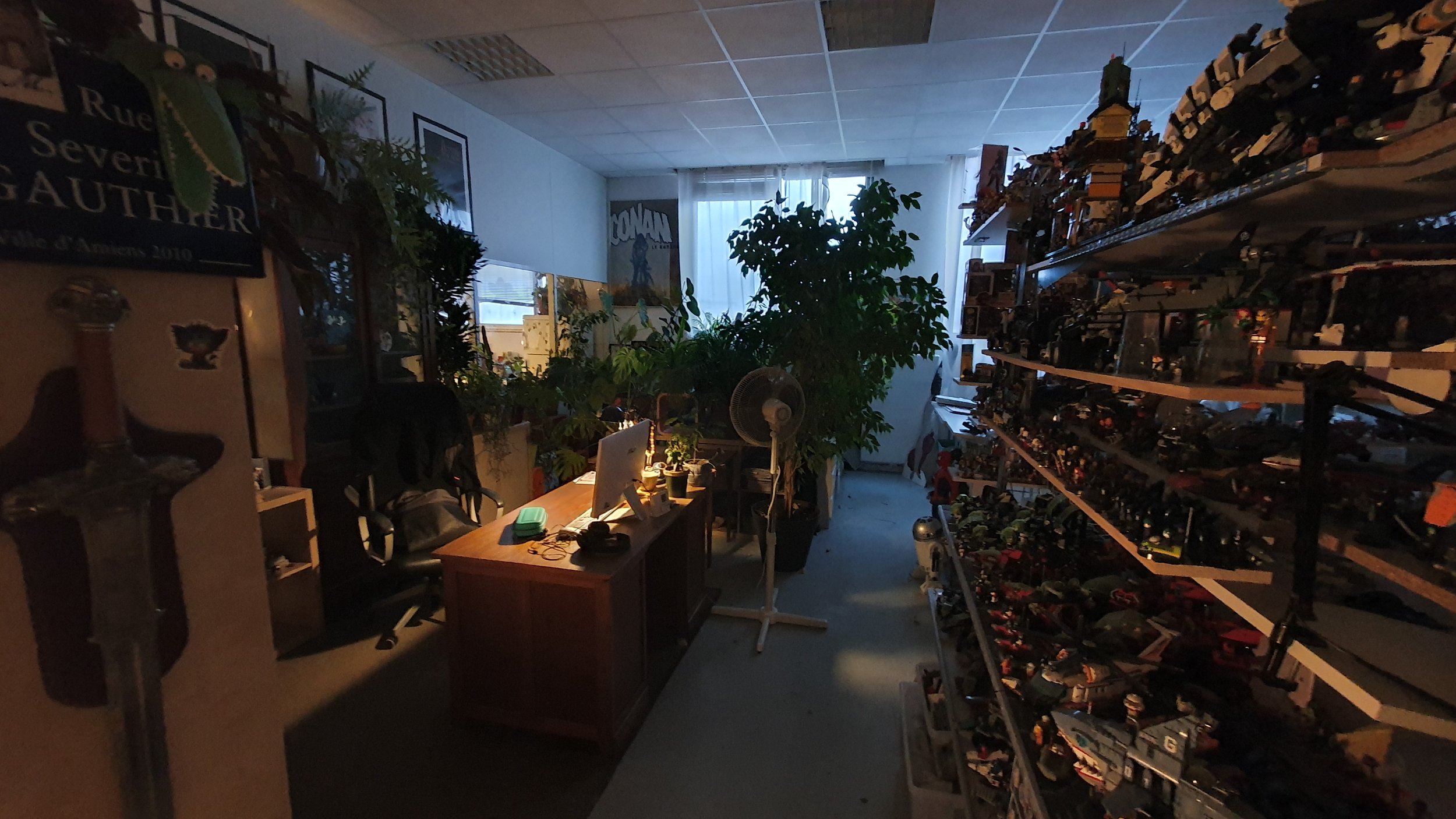
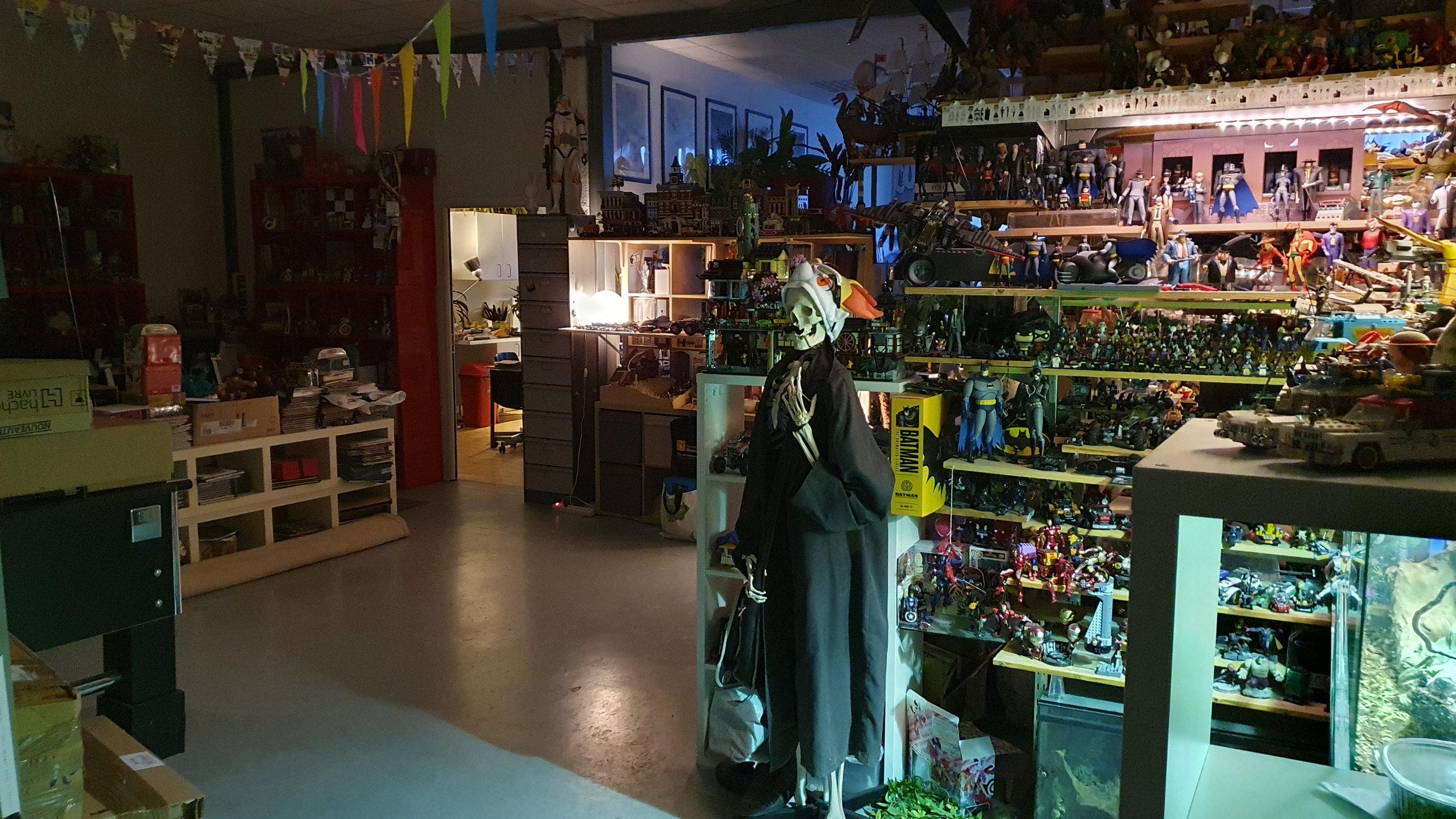
Sam: Why Classic Space? What is your creative process when building? I imagine you rely on your experience as an artist when conceiving how your creations will look.
Thomas: That goes back to how I started with LEGO. My first box was 918 Space Transport! Sometimes I do use drawings to lay down my first shapes. Then I either go into Stud.io, or I go directly to realising it with bricks, depending on the size and the complexity of the creation. I also test a lot with real pieces to be sure that it works because sometimes the software is capricious, and can't show if it works or not.
Sam: When you go to the next step—which is building—what software do you use and how do you design your models?
Thomas: Stud.io is my software of choice. I often start with the parts that will be key for me visually, an engine or the cockpit for example, and then I build around those important elements.
I always put myself in the place of my minifigures. In my ships, I try to make sure that everything is practical and useful to scale. If we have to live in this ship it must be functional, so I work a lot on the details and the practical things... which means I spend a lot of time designing a model.
Once the set is finished, I usually let it rest for a month and then I start the deconstruction stage: I remove the unnecessary things or things that are not flattering for the silhouette of the vehicle, and I also start to look at the price of the set... because I don't want my models to exceed crazy sums of money by using too rare parts. This step is long but I rather like it, it feels a bit like working for LEGO.
Then once this step is done, I move on to creating the building instructions to check once again that everything is good and also because I love this part. I always try to make building instructions accessible for all ages, and that also takes a lot of time.
And finally the last step, the one I enjoy the most, the ordering of parts (if I don't have everything in stock) and following the construction process with my building instructions—this is where I see in real life if everything is ok, and if all those weeks of conception have been up to the result. Sometimes it's ok, sometimes it's not, so I retouch as I go along the assembly, retouching the real model and the virtual one!
Sam: The use of pieces from the Classic Space era remains a constant but you use a lot of recent pieces in your MOCs, too. How do you decide which pieces to use?
Thomas: Yes, I use only the new gray, light and dark, and regular blue! Trans-yellow for everything transparent and I allow myself to use trans-orange for the engines! I'm a rebel...
For me, Classic Space is these colors. On the other hand, there is no limit on the parts as long as they are of the right color. Nor on the color of the minifigures—I use a little bit of everything...
Sam: You are (among others) a very big fan of Akira Toriyama. Can you explain to us to what extent you find inspiration in his universe to adapt it to your creations?
Thomas: Akira Toriyama, father of Slump and Dragon Ball among others, loves making models, and he is passionate about everything that is a military vehicle. He merges his two passions in his drawings and I love it—he deforms them, uses very geometrical shapes in his interpretation of vehicles in his illustrations. In short, he inspires me! He is my spiritual master and for some creations I was directly inspired by some of his drawings.
Sam: Do you share the instructions of the models you make? I think that like me many would want to build models of such playability!
Thomas: I share my plans for free via my socials, on my Facebook and Instagram, approximately every two to three weeks. I started sharing instructions when LEGO released their awesome 10497 Galaxy Explorer set. I built all three versions, and on the smallest one (the 918 remake), LEGO didn't include landing gear. Why? It remains a mystery! So with the remaining parts of their set, I proposed a revisited version, and as I had modeled everything in 3D, I shared the instructions.
So for the moment, I'm sharing mainly small creations, but I plan to create a YouTube channel to share how some of the bigger ones are built.

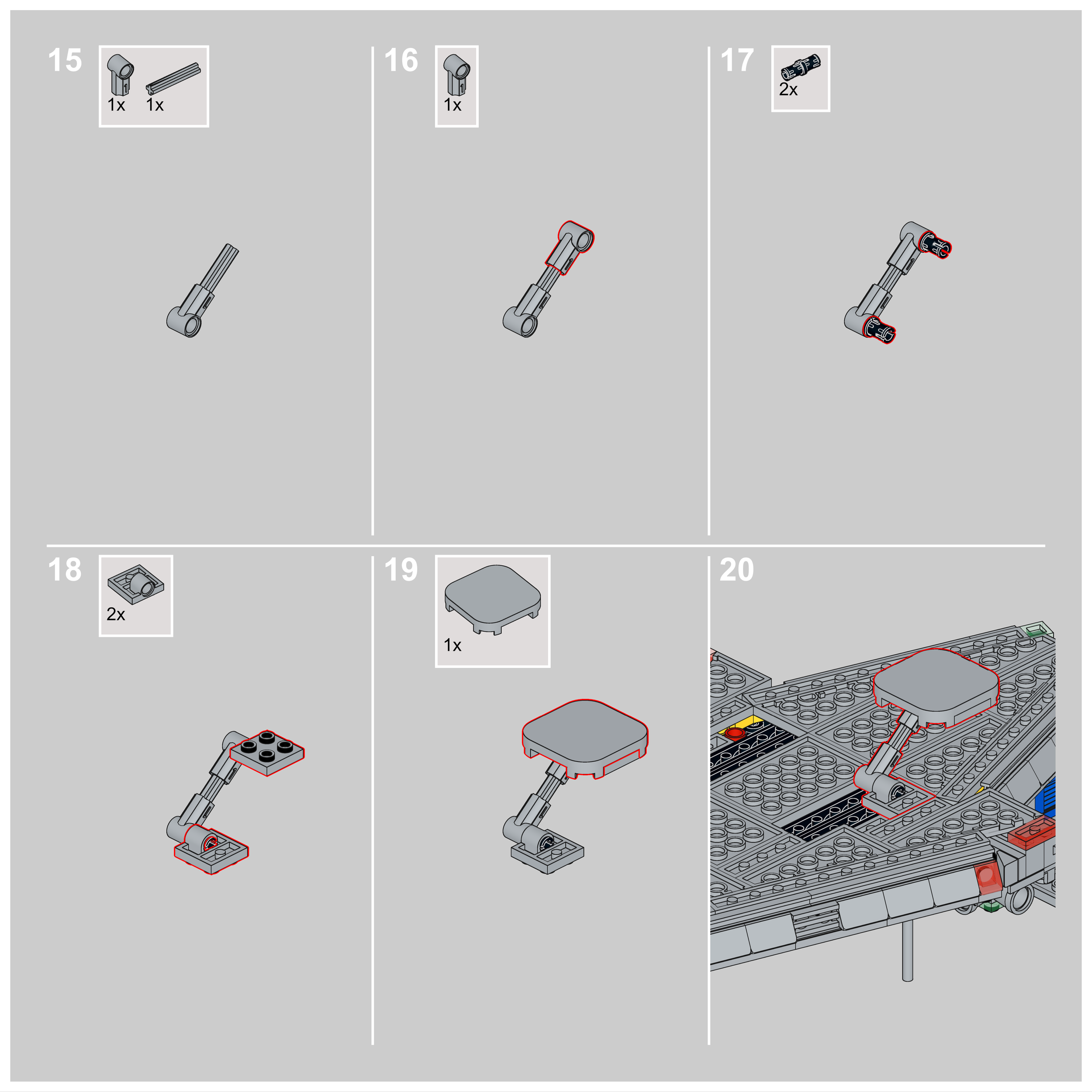


Sam: It was wonderful chatting with you. It’s Nerdvember! Could you draw a dedication for the BrickNerd team?
Thomas: I'll take care of it. ;)
Sam: Thank you so much, Thomas! I will now classically leave you for more dark but colorful space, ;)
Thomas: Thank you, Sam!
Can you build your drawings or draw your LEGO builds? Leave your thoughts in the comments below.
Do you want to help BrickNerd continue publishing articles like this one? Become a top patron like Charlie Stephens, Marc & Liz Puleo, Paige Mueller, Rob Klingberg from Brickstuff, John & Joshua Hanlon from Beyond the Brick, Megan Lum, Andy Price, Lukas Kurth from StoneWars, Wayne Tyler, Monica Innis, Dan Church, and Roxanne Baxter to show your support, get early access, exclusive swag and more.






































